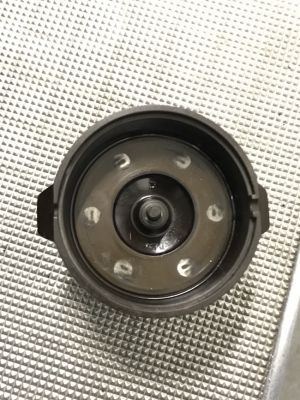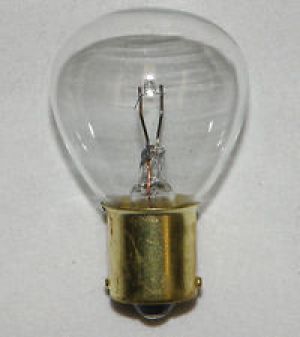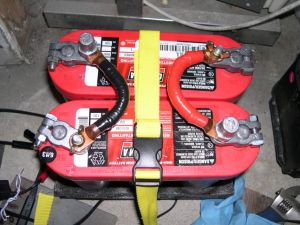- Home
- About Us
- Join/Renew
- Member Benefits
- Member Pages
- Log In
- Help
- Museum Store
Scott,
If you have to ask those questions, just buy one and save yourself the pain and possible damage to your car / battery / cell phone / whatever.
Electronics go bad REAL FAST! ZIP!
Peter
Scott,
Do you use your iPhone for GPS?
Is that why it dies quickly?
Those GPS Apps suck power like no tomorrow.
Thy can kill a fully charged iPhone battery in two or three-hours.
Peter
David,
Here is an even less expensive version of that WinPlus.
Peter
David,
I like that thing!
What a great idea for jumpstarting.
It looks a lot smaller than a 12v jump pack.
Peter
Scott,
Here is the smaller one.
This option is less expensive than both suggested by Greg or David.
Peter
Scott,
Follow Greg’s suggestion and after installing it, go to an Auto Parts store and purchase a generic cigarette lighter / power port socket and install it under the dash or somewhere out of sight.
I did so on my Series 80 and it is great, but the purchase and rigging will cost $75 to $150 (for a good one) and a few hours of labor.
As an alternative, you could always buy a 10000-mAh or 20100-mAh Power Bank Battery for between $25.00 & $40.00 and that will keep your iPhone charged for three days to five days (7-recharges of an iPhone with the 20100-mAh size, 3-with the 10,000-mAh).
I attach the link for your review.
Peter
BRAVO! BRAVO!
This is an Ode to Your Beautiful Love!
Richard,
The best records (Bernie Weis’ list) indicate that there were an estimated 7885, 133 cars produced in 1929.
There are 386 recorded on Bernie’s list, with 158 existing as of 2012.
As for Dual Cowl Phaeton cars, the number produced is unknown, but there are 7 shown on the list, not including 1 “Sport Phaeton” and 1 “Phaeton.”
If you extrapolate from “listed” versus “produced” the number is small, as in 142-produced (7/386 = 0.018% & 0.018 X 7885 = 141.93, ergo, 142).
I believe that my calculations are correct and that this information is somewhat useful.
If I erred in the construction of my calculation, one of the PAS Math Wiz Gents will correct me.
Peter
Curtiss,
Here is a photo of the bottom side of a Series 80/81 distributor cap.
Peter

Curtiss,
If that rotor is the correct rotor for that engine, Greg is correct about it needing Series 80/81 cap.
That cap does NOT have studs on the inside as do most, if not all of the caps of that vintage.
A Buick cap will not do the job.
The Series 80 / 81 cap has smooth contacts on the inside; it is totally flat on the inside.
Those caps are difficult to find.
I’ll post a photo of the inside, if I can find one.
Peter
Curtiss,
What type of wheels are holding the frame above the ground?
Are they for sale, or not?
Can you post an email address for your buddy?
There may be a few bits of interest bolted to that frame.
Thanks,
Peter
Bob,
The Series 80 uses a GE 1133 mushroom, 24W, 32CP bulb.
It looks like the GE 2330 / 2530 but without the flange at the neck of the bulb.
I trust that the photo will load.
Peter

Bob,
Those bulbs have a flange on the neck of the bulb and won’t fit in a Series 80 headlight socket.
They appear to LOCK IN at the neck of the bulb and the Series 80 needs the type with only the bayonet mount base.
The Series 80 also uses single contact bulbs (but there are ways around that aspect of the single vs. dual contact thing).
Peter
Brian,
That Primer Valve is just for starting the car.
It is not a pump.
It works, when activated, by pulling gas from the carburetor fuel bowl and shooting it into the intake manifold using the vacuum created by the pistons moving up and down in the cylinder block.
It does nothing if the engine is not turning over.
It is activated by pulling on the “Primer”” knob while cranking over the engine.
Any accelerator pump ought to be a part of the carburetor itself and should be connected to the fuel pedal / carburetor connection.
Peter
“
George,
What do you run as headlamp bulbs to improve the ability to see while driving at night?
Please illuminate us.
Peter
Patrick,
The battery box is indeed large enough for TWO Optima 6v red Top batteries.
I have that arrangement, AND I have been told many times that such an arrangement is serious overkill with a Series 80 6-cylinder engine.
That stated, I installed that two battery set up because I was the guy who arranged for the Killer Deal on Optima 6v Red Top batteries a few years back.
For about $200, I have an absolute bulletproof battery system and no more lead-acid batteries to go dead in a few years.
Note on the photo that I have the batteries mounted on a piece of plywood with a foam cushion between the plywood and the batteries with the strap running around the wood.
I do believe that the Pierce-Arrow 8 & 12 cylinder cars can benefit from TWO 6v batteries.
Peter

Patrick,
Check this posting out.
Positive Ground Question, General / Series 80 & 81 Kenneth R. & Twila Arritt 21-Jun-16 11:54 PM
Use the Search Term: BATTERY, and it will come up near the bottom of the first page.
It seemed to not pop up on the first page when I used the words “POSITIVE GROUND QUESTION.””
DUH!
Peter”
Tom,
A number of similar events occur yearly both in the US and Europe.
All you need to have to participate is a qualifying car (correct vintage, etc.), lots of time and a boatload of clams, duckets, lolly or moolah!
Our Annual PAS Meet attempts to offer a similar experience, but at a more affordable price and a home base hotel from which we begin each tour.
Peter
Tony,
I have know about that Marmon HCM or a number of years and merely needed to roust the recollection from my aging brain. Regardless, thank you.
According to the Sotheby article, Walter Dorwin Teague Jr. designed that car as “the way a car should look,” so I guess that Pierce-Arrow got the fender mounted headlight design correct according to WDT, Jr.
P-A cars are wonderful in their design and when shown always draw a TON of admirers.
Just as do YOUR assortment of cars, Tony.
Cheers,
Peter
